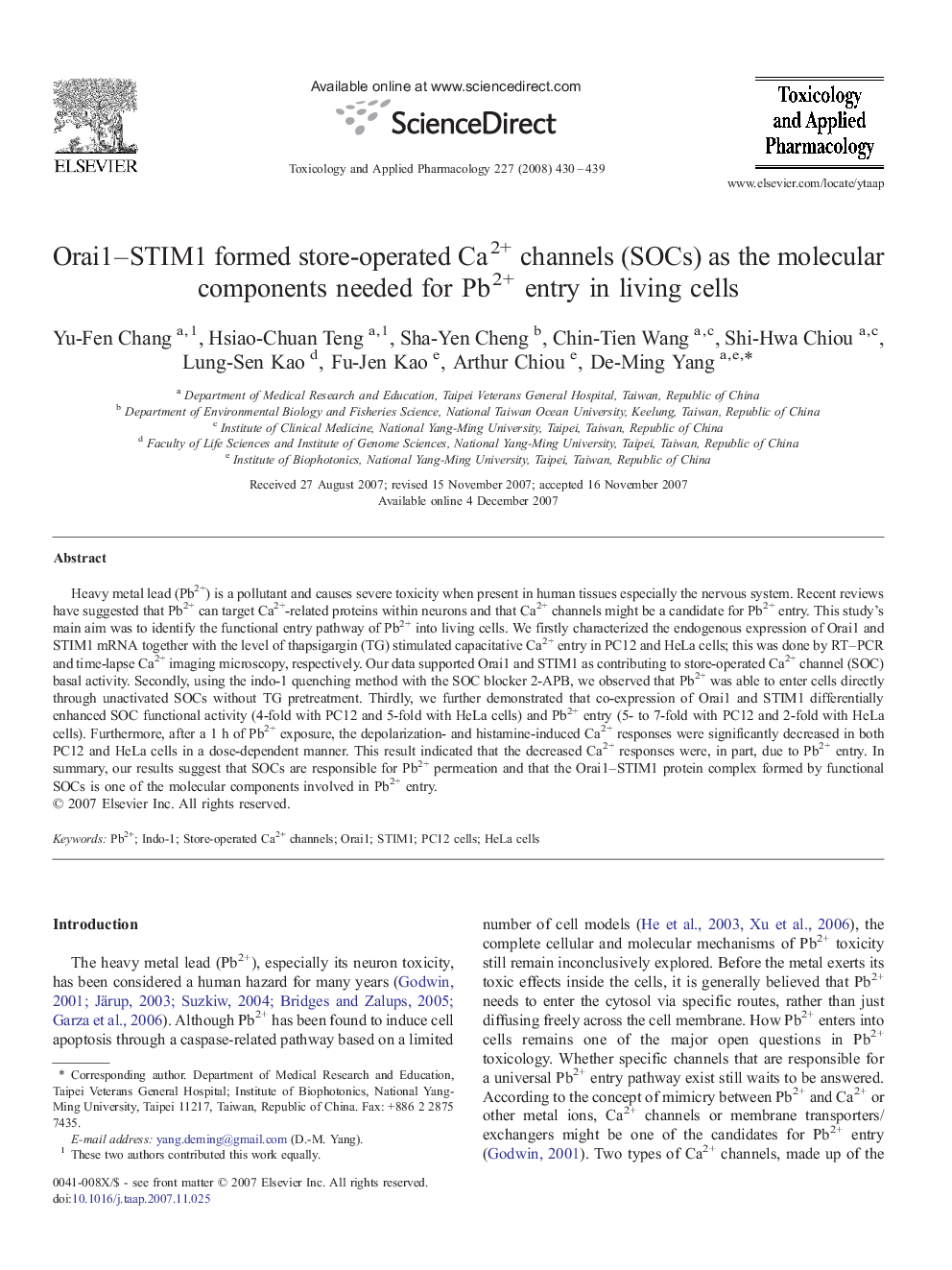| کد مقاله | کد نشریه | سال انتشار | مقاله انگلیسی | نسخه تمام متن |
|---|---|---|---|---|
| 2571498 | 1128636 | 2008 | 10 صفحه PDF | دانلود رایگان |

Heavy metal lead (Pb2+) is a pollutant and causes severe toxicity when present in human tissues especially the nervous system. Recent reviews have suggested that Pb2+ can target Ca2+-related proteins within neurons and that Ca2+ channels might be a candidate for Pb2+ entry. This study's main aim was to identify the functional entry pathway of Pb2+ into living cells. We firstly characterized the endogenous expression of Orai1 and STIM1 mRNA together with the level of thapsigargin (TG) stimulated capacitative Ca2+ entry in PC12 and HeLa cells; this was done by RT–PCR and time-lapse Ca2+ imaging microscopy, respectively. Our data supported Orai1 and STIM1 as contributing to store-operated Ca2+ channel (SOC) basal activity. Secondly, using the indo-1 quenching method with the SOC blocker 2-APB, we observed that Pb2+ was able to enter cells directly through unactivated SOCs without TG pretreatment. Thirdly, we further demonstrated that co-expression of Orai1 and STIM1 differentially enhanced SOC functional activity (4-fold with PC12 and 5-fold with HeLa cells) and Pb2+ entry (5- to 7-fold with PC12 and 2-fold with HeLa cells). Furthermore, after a 1 h of Pb2+ exposure, the depolarization- and histamine-induced Ca2+ responses were significantly decreased in both PC12 and HeLa cells in a dose-dependent manner. This result indicated that the decreased Ca2+ responses were, in part, due to Pb2+ entry. In summary, our results suggest that SOCs are responsible for Pb2+ permeation and that the Orai1–STIM1 protein complex formed by functional SOCs is one of the molecular components involved in Pb2+ entry.
Journal: Toxicology and Applied Pharmacology - Volume 227, Issue 3, 15 March 2008, Pages 430–439